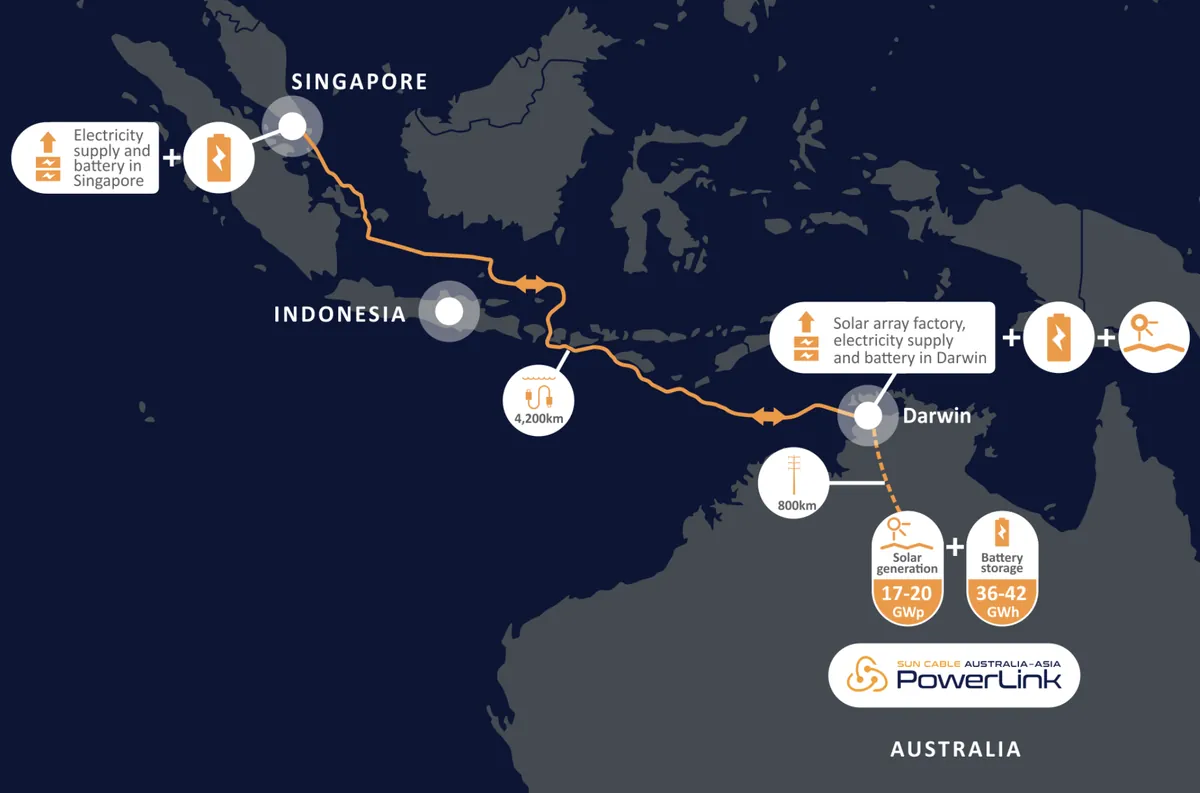Australia has granted approval for a groundbreaking A$20 billion ($13.5 billion) solar project, marking a significant step towards renewable energy expansion in the region. The Australia-Asia Power Link project, spearheaded by SunCable, aims to transmit energy from a substantial solar farm in northern Australia to Singapore through a 4,300 km undersea cable.
Tanya Plibersek, Australia's Environment Minister, announced the decision on August 21, 2024, emphasizing the project's potential to address the increasing demand for renewable energy both domestically and internationally. The approval comes with stringent environmental safeguards, including measures to protect the habitat of the greater bilby, a vulnerable nocturnal marsupial native to Australia.
The ambitious project is set to unfold in two phases, with plans to deliver up to 6 gigawatts of green electricity to large-scale industrial consumers in Darwin, the capital of Australia's Northern Territory, and Singapore. This initiative aligns with Australia's commitment to renewable energy, as the country aims to achieve 82% renewable electricity by 2030.
SunCable, owned by billionaire Mike Cannon-Brookes, the co-founder of tech firm Atlassian, expressed confidence in the project's viability. The company is now focusing on advancing to the next planning stage, targeting a final investment decision by 2027. If all proceeds as planned, electricity supply could commence in the early 2030s.
The Australia-Asia Power Link project represents a significant leap in intercontinental power grid concepts, which have been discussed since the 1950s. It has the potential to reduce Singapore's emissions by 6 million tonnes annually, supporting the city-state's goal to quadruple solar energy deployment by 2025.
While the project has received clearance from the Northern Territory government and its environmental watchdog, SunCable is still in discussions with Singapore's energy regulator and the Indonesian government regarding the cable's inter-connector component and its passage through Indonesian waters.
This approval comes at a time when Australia, currently the world's third-largest exporter of fossil fuels, is ramping up its renewable energy initiatives. The move contrasts with the opposition coalition's proposal to build nuclear plants to replace coal-fired power by 2050, in a country where nuclear power is presently prohibited.
The Australia-Asia Power Link project not only showcases Australia's commitment to clean energy but also highlights the potential for international cooperation in addressing global energy challenges. As the world's largest solar farm and one of the longest undersea cables, this initiative could set a precedent for future large-scale renewable energy projects worldwide.
"SunCable will now focus its efforts on the next stage of planning to advance the project towards a final investment decision targeted by 2027."
As the project moves forward, it will undoubtedly face technical, financial, and regulatory challenges. However, its successful implementation could mark a significant milestone in the global transition to renewable energy sources and international energy cooperation.
